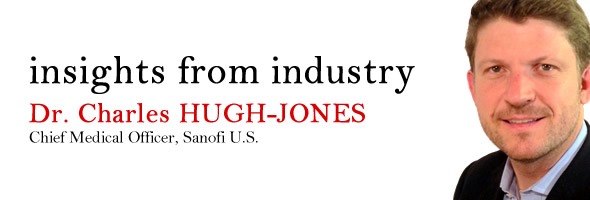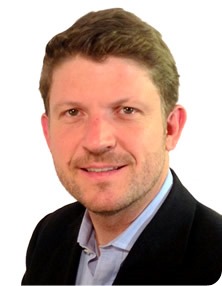Sponsored Content by SanofiApr 8 2014

Please can you outline the new data sharing platform Project Data Sphere, LLC (PDS) have launched?
Project Data Sphere, LLC (PDS) is an independent, not-for-profit initiative of the CEO Roundtable on Cancer’s Life Sciences Consortium (LSC), a group formed by President Bush in 2001 to look at the ways in which different organisations can come together to improve outcomes in cancer research that no individual group could do by itself. The data-sharing platform is one of the projects developed by the group.
While progress in cancer research has been remarkable, mortality remains very high. At the same time large numbers of valuable data sets are not put to optimal use The Project Data Sphere initiative is a, broadly accessible web-based platform through which the entire research community can access integrate and analyse, multiple comparator-arm datasets from academic and industry historic phase III cancer trials. The goal of the project is to advance research for cancer patients around the world.
You can visit www.projectdatasphere.org to learn more about the Project Data Sphere initiative.
The Project Data Sphere Initiative from Project Data Sphere Initiative on Vimeo.
Who is the PDS database accessible to and is there a cost attached to using the platform?
The database is accessible to registered users. Anyone, interested in gaining access will be required to fill out an on-line application which includes a data user agreement. A high level scan for non-compliant activities, is conducted, but fundamentally it is a broad-access database.
There is no cost attached for either data users or data providers. Any organization, either industry or academic, with bona fide data who signs the data-sharing agreement is able to upload data using a simple upload tool.
In addition, anyone registered on the database has full access to all data, and access to a full suite of state-of-the art analytics that have been provided by SAS Institute Inc. These are sophisticated tools that enable people to perform visual analysis and to integrate datasets, which makes it terrifically valuable.
During its development, the group were thinking along the lines of "Could this be valuable to a medical student in, say, China, or a PhD student or in Brazil for example". Not only does the platform provide them with the data, it also gives them the analytical tools they need to do something really useful with the data.
In the future, the group plans to add a social media element so different groups can talk to each other, develop new ideas and share their learnings. As the depth and breadth of the database expands with data from multiple tumour types we will conduct a series of research challenges to drive further innovation and leverage the power of a diverse global community to focused on finding solutions for cancer patients.
What were the main reasons for developing the platform?
There are still 8.2 million people worldwide dying from cancer every year. At the same time, in both commercial and academic organisations, there is a huge amount of data from previous trials that in reality is sitting in warehouses gathering dust.
If we can harness all these data sets and consolidate them in an easily accessible platform with analytic tools, you can start to drive the benefits that such a platform can have. This is where we believe the power of the crowd will add significantly to the value of what the Project Data Sphere platform has managed to bring together.
What impact do you think PDS will have on cancer research and ultimately the lives of cancer patients around the world?
There are still 8.2 million people dying from cancer every year. Within cancer research, although there has been tremendous progress (and there has been huge progress in understanding the disease in certain therapeutic areas), the reality is that there is still a greater than 90% attrition rate of drugs going from phase I through to registration, which is not good for cancer patients.
By opening up this type of data, it is possible to do all sorts of things, such as improve our understanding of disease progression and endpoints, development of data standards, conduct more efficient research through the reduction of clinical trial duplication, optimisation of clinical trial design, disease modelling and so on.
One can even envisage a world where there are very large data sets that can reduce the comparator arm in clinical trials or allow smaller clinical trial sizes based on historical information from large databases.
It can even help with teaching to increase students’ understanding of the clinical trials process.
Perhaps most exciting will be the ways people use this data that we have not yet thought of. It is a bit like asking when they first wrote the code for the worldwide web what the internet could be used for. At the time it was developed, there was probably a limited view on what the impact of the internet was going to be, compared with what we know 20 years later. The same could be true for clinical data sharing. What we don't yet know is probably more exciting that what we know can be done with it.
What can be learnt from data sharing that has previously been used in other disease areas such as Alzheimer’s?
There is relatively limited view on the value of data sharing as, historically, it has not been done in any large scale or structured way.
There are a few notable exceptions however, such as SAGE Bionetworks and the Campaign Against Major Diseases. The latter build an Alzheimer's disease model database that has shown significant success, working with the FDA to help drug approvals and bring new therapies to patients.
We are starting to see an opening up of data sharing, but the future is ahead. There are going to be lots of different models as one size will not fit all. As we piece together the data sharing environment, it can only be good for patients moving forward.
Why hasn't data sharing happened earlier?
Recently, a lot of things have come together at once. Improved technology has allowed broad-reaching data sharing. There have also been changes in attitudes towards data sharing, at both an individual patient level as well as within companies and academia. These have made it more feasible.
There is also a realisation that we have to do better; we have large volumes of data and if they are made available there are remarkable things we can do with them using analytical overlays. Together, these things have created an environment in which we can realise data sharing.
How much data has Sanofi already provided to PDS and how many organizations have committed to providing additional cancer data sets?
Sanofi has initially provided three comparator arm cancer data sets and has a pipeline of additional data sets that will be available in the coming months. AstraZeneca, Bayer, Celgene, Johnson & Johnson, Memorial Sloan Kettering Cancer Center, Pfizer, and Quintiles, havealso provided data, which will be available at the launch of the platform.
The Project Data Sphere initiative is continuing to work with other organizations, including large NCI cooperative groups who will also all be providing additional cancer data sets in due course. There is a whole pipeline of data that will be emerging.
The platform will be launched on 8 April 2014 with probably around 8-10 data sets, and a further 20 pledged and in preparation. In addition to the patient-level data, these data sets will include the protocol, a blank CRF template(case report form) to facilitate navigation of the data set, and all the data descriptors.
What excites you most about this new data sharing platform?
Two things really, one is the fact I mentioned earlier about not knowing the full extent to the benefit that can come from this data.
The second is what makes this particular platform different: it is broad access, it provides freely available analytics for registered users, and it has the ability to integrate different data sets from different providers.
These, coupled with the future addition of a social media overlay and research challenges, creates a very powerful ecosystem.
Are there any plans to extend PDS to disease areas outside cancer?
We are working very closely with other organisations, both within and outside the cancer field, to share our learnings.
We are actively in discussion about exactly how to move the platform forward as the next step. There are lots of exciting directions we could follow, but that decision has yet to be made. Nothing has been ruled out.
How important do you think data sharing will be in the future of cancer research?
It is absolutely critical. We just need to refer to the point of 90–95% attrition in the development of cancer drugs from phase I to registration.
In order to fulfil the aim of a war against cancer, we need a collaborative effort. In this way we can all learn from past successes and past mistakes and feed these learnings into future clinical trials and clinical development processes, which can only be good for cancer patients.
The data-sharing movement is really exciting. The real power of the Project Data Sphere platform will come from getting a larger volume of datasets. Volume allows you to start manipulating the data in ways that are not possible with individual datasets.
We are working with the Prostate Cancer Foundation, a large cancer advocacy group, together with SAGE Bionetworks in Seattle, amongst others, to start building challenges and competitions related to findings within these data sets.
Where can readers find more information on PDS?
www.projectdatasphere.org
About Dr. Charles Hugh-Jones
 Dr. Charles Hugh-Jones was named Chief Medical Officer of Sanofi U.S. at the end of 2012.
Dr. Charles Hugh-Jones was named Chief Medical Officer of Sanofi U.S. at the end of 2012.
Dr. Hugh-Jones joined Sanofi-Aventis as head of U.S. Medical Affairs Oncology. With the integration of Genzyme he headed up Medical Affairs, North America for Sanofi Oncology, Hematology and Solid Organ Transplantation.
Dr. Hugh-Jones served as Vice President of Medical Affairs at Enzon Pharmaceuticals from 2005 to 2007 and then as Vice President of Global Business Management from 2007 to 2009. He joined Schering AG/Bayer AG in 2001, where he worked in the Oncology Strategic Business Unit based in New Jersey, USA providing global medical leadership to several key brands. From 2003 to 2005, Dr. Hugh-Jones acted as Director of Medical Affairs at Schering AG in the Global Business Unit, and also served as Senior Medical Advisor from 2002 to 2003.
Dr. Hugh-Jones was trained in neuroscience at Imperial College, London. He went on to qualify as a Physician at Charing Cross and Westminster Medical School. He completed internal medicine Boards while practicing at Chelsea and Westminster Hospital, and St. Mary’s Hospital, London, becoming a Member of the Royal College of Physicians. He then entered the radiology fellowship program at the Royal Postgraduate Medical School, Hammersmith Hospital, London.